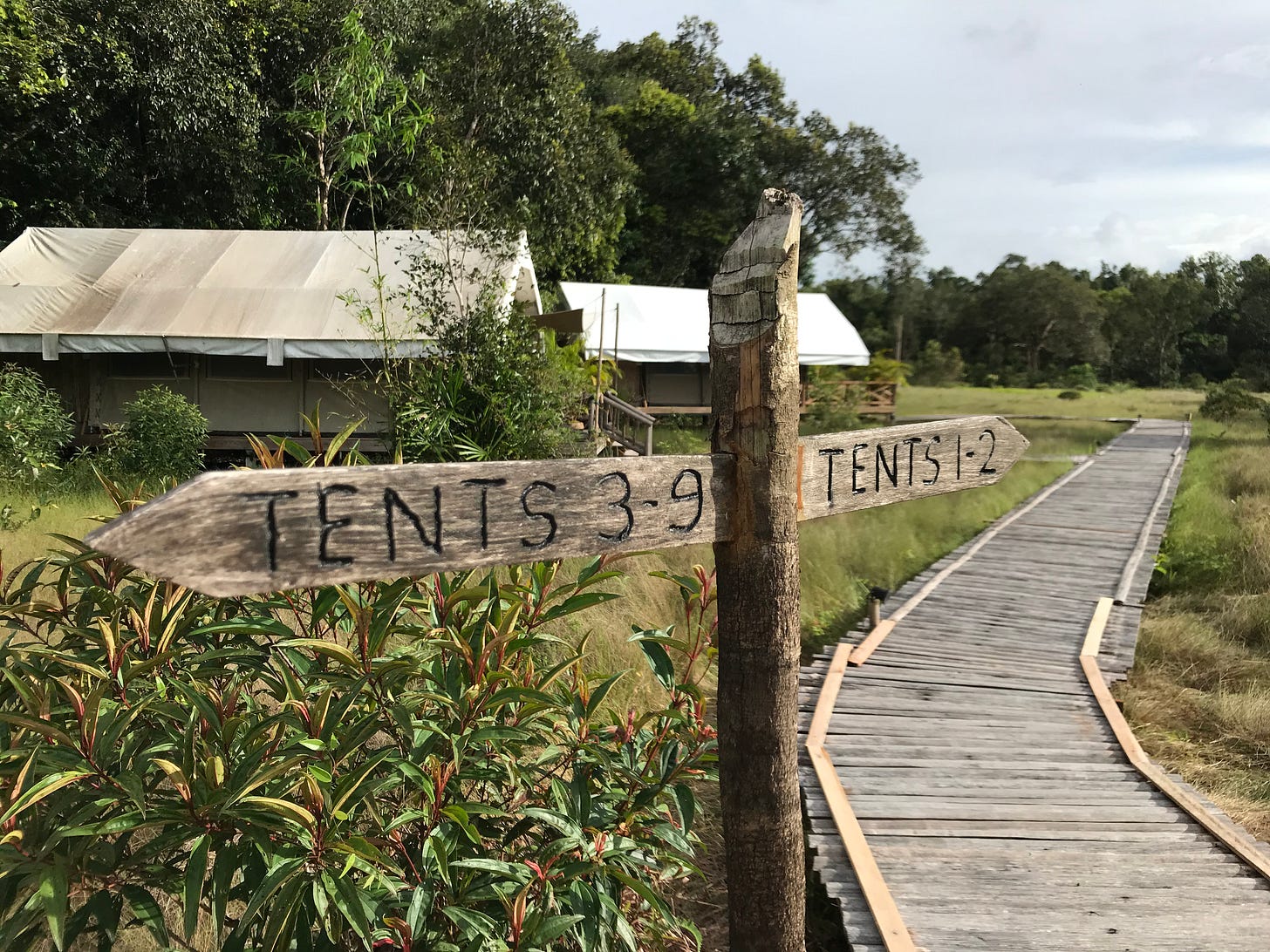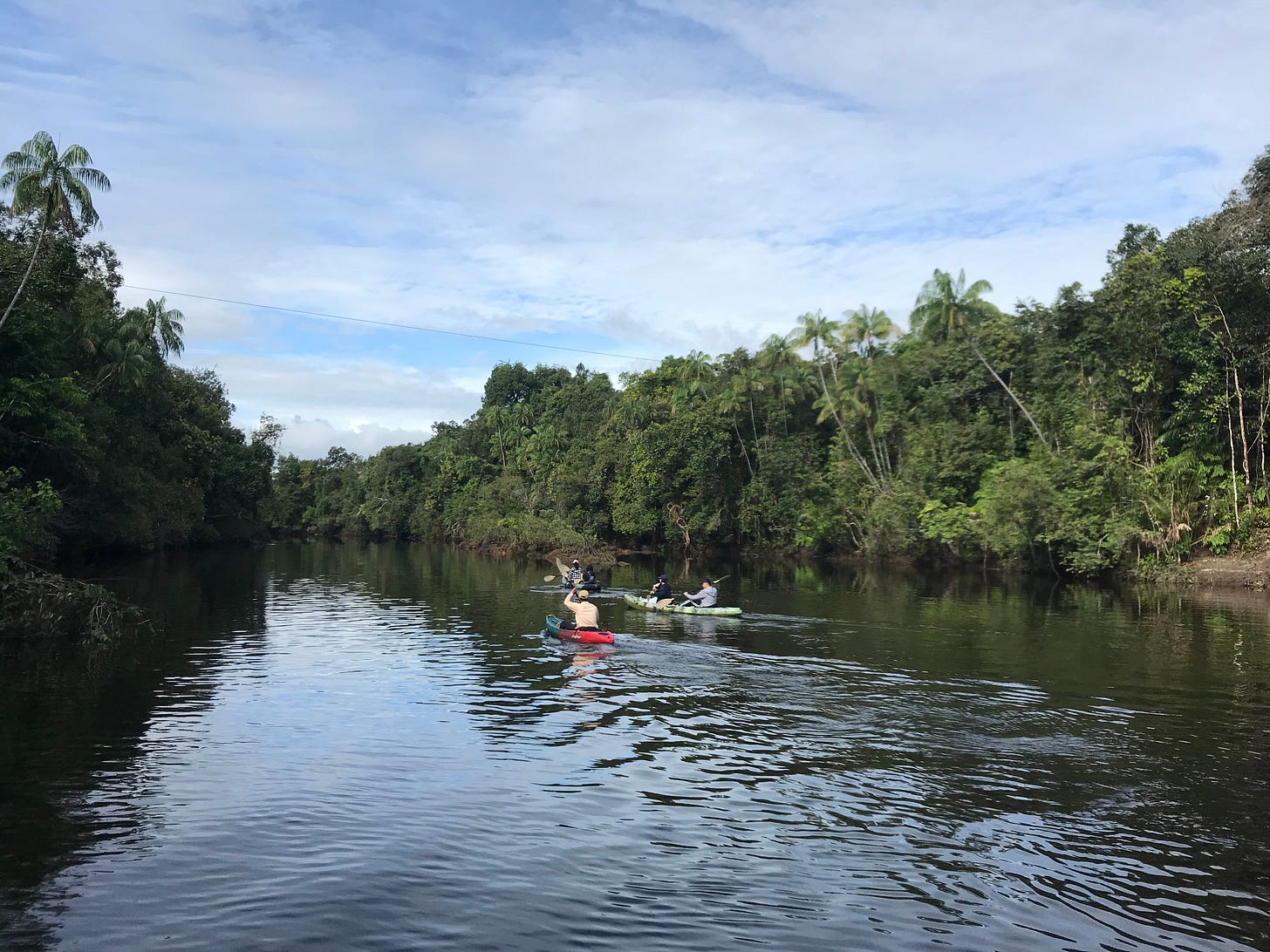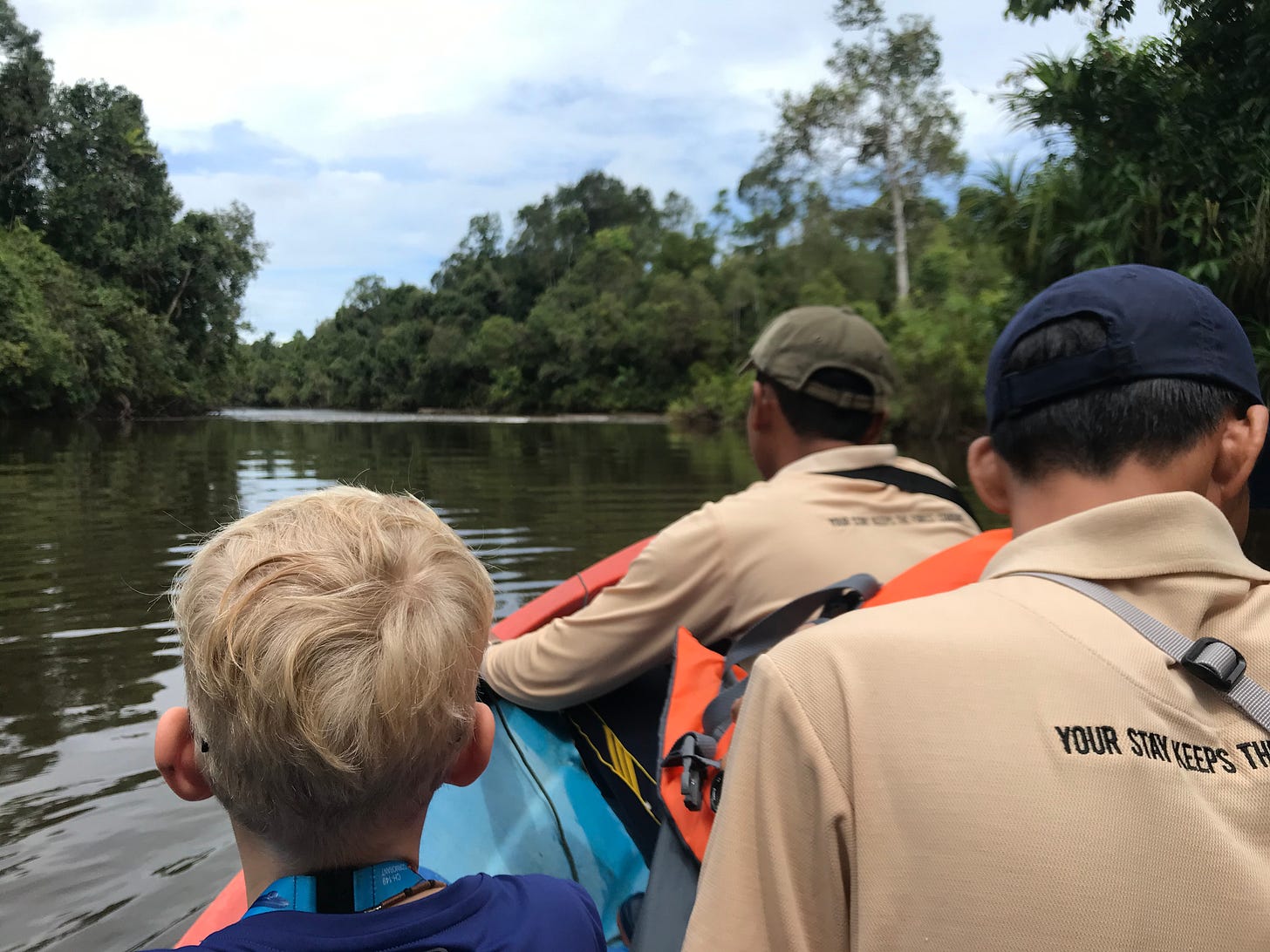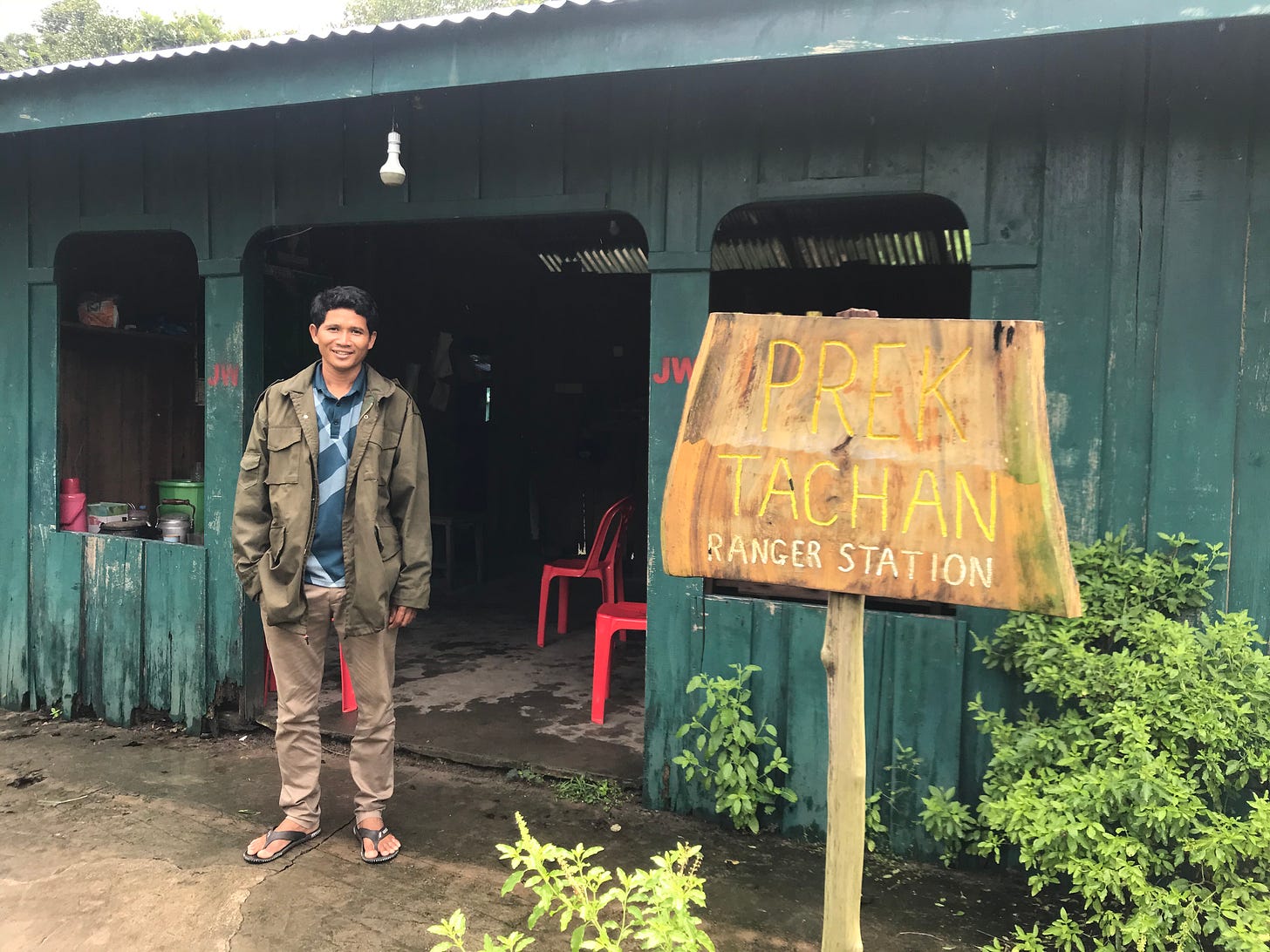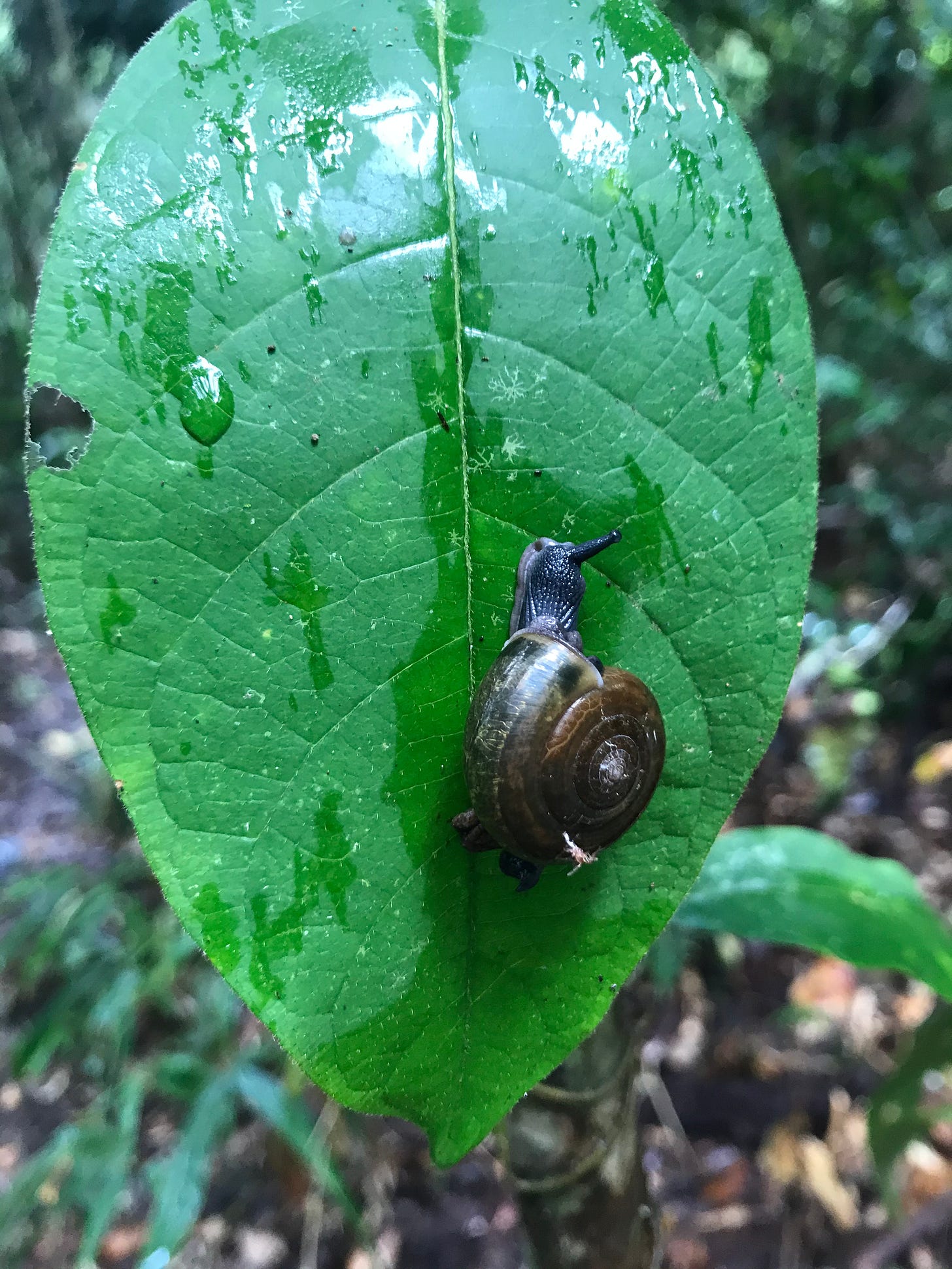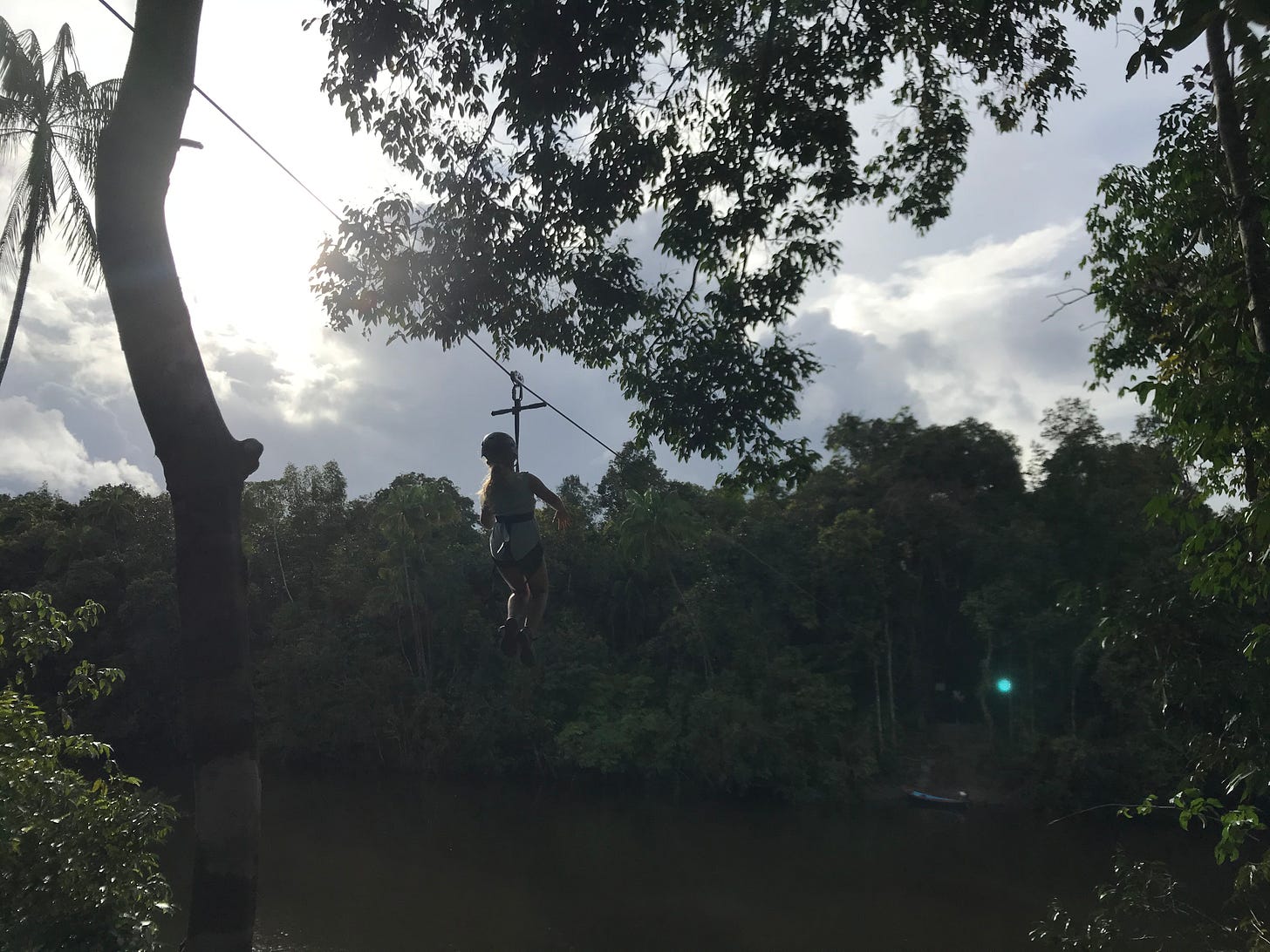Welcome to the Jungle
In a remote corner of southwestern Cambodia, the Cardamom Tented Camp is doing its very best to help preserve one of the last true wildernesses left in the Kingdom
The Arrival
“We are waiting for you under the bridge,” read the message, and so began our recent adventure at the rustic Cardamom Tented Camp. Our actual journey had started more than six hours earlier, as we’d left Phnom Penh, suffered a car breakdown close to Kampong Speu, and paused for a quick bite to eat at aptly named restaurant The Stop. The text had come from Englishman Allan Michaud, the tented camp manager and noted wildlife photographer (more on that later), and when we arrived he was indeed waiting under a bridge, as we boarded his boat for the 40 minute ride downstream.
As we headed south, the scenery on both banks gradually changed - from razed ground to farmland, from second growth foliage to virgin forest, untouched by man. You could see the treeline change, as the jungle crept towards the river, but more importantly you felt the difference in atmosphere, as those omnipresent sounds of development - cars driving by, the shouts of people in the field, even dogs barking - gave way to… nothing. We had entered the 170,000 hectare Botum Sakor National Park, at the center of which is the 18,000 hectares of protected land that is home to the Cardamom Tented Camp.
Allan had begun to explain this all to us, when the heavens opened and a typically torrential rainstorm created a wall of water between the boat and the banks. Unable to see anything, let alone have a conversation, we instead focused our attention on trying to stay as dry as possible. A little over 30 minutes later, just as the rain started to die down, we came round a bend and headed for a small dock in the middle of the jungle. Like something out of a Hollywood movie, the heavens parted as we disembarked, hauling our damp luggage up the steep bank, as we sat down to dry off in a thatched-roofed building that serves as the Tented Camp’s reception, lounge and restaurant.
The Backstory
Every visit to the Cardamom Tented Camp begins with a map. From a nearby shelf, Allan pulled down a plastic binder full of information, in which he had a map laden with colored lines, contours and various shades of green. “This is where we are,” he pointed, drawing our attention to a green bordered section marked ‘CTC Protected Area’ in the middle. Covering 18,073 hectares (that’s 180 square kilometers), the camp lies at the centre of a conservation concession from the Cambodian government, which was granted in 2009 on the proviso that a sustainable tourism development be put in place to supply economic opportunities for locals. The result was the eco-lodge, which opened in November 2017, a three-way initiative between Thailand’s Minor Group and YAANA Ventures, and the Cambodia-focused Wildlife Alliance.
Surrounding the concession is the Botum Sakor National Park, a once spectacular protected nature preserve set up in 1993 that covers 1,712.5 km², but has been steadily chipped away at by encroaching plantations, industry, and major developments like the gargantuan Dara Sakor project, a Chinese-funded complex that will eventually house golf courses, resorts, a sea port, airport and - allegedly - a military base. On the drive down here we passed a huge road indicating the way to the resort, a sore gash in the red earth that makes up most of the jungle soil here. It’s exactly why places like the Cardamom Tented Camp are so necessary, in order to keep the wolves at bay (but the elephants in). However, in order to remain open they need the tourists to visit - and worthy as the cause is, they won’t come just to donate money, so what’s the attraction?
The Adventure
When you visit the camp’s website, you’ll see lush images of safari-style tents, set amidst sun-drenched grassland, interconnected with raised wooden walkways, and interiors of linen bedding, classically-styled furniture, and window flaps that roll up to reveal the jungle right outside your window. What they don’t mention is that rainy season, when we stayed, is probably not the right time to visit, as the late afternoon downpours thunder down onto the canvas in an ear-shattering drumroll, and the humidity pervades your clothing. Of course, like any stay outside your comfort zone, we had to acknowledge that this was not downtown Phnom Penh, or the outskirts of Siem Reap, or even the remote beach resorts of Kep. After a day, we settled in to the spirit of adventure, and embraced the wilderness around us (albeit, in damp clothes).
You will be aware that paying for a stay here goes towards preserving part of a pristine environment, but what you learn on your second day is that part of it goes directly to paying the wages of a small group of dedicated individuals that put their own lives on the line to patrol the jungle, tackling the poachers that come looking for endangered wildlife to sell on the black market (not to point fingers, but much of it - thousands of pangolins alone are illegally slaughtered for placebo ‘health tonics’ - is destined for Chinese markets). You discover this via an early morning kayak up the river, a quiet waterway untrammeled by fishing boats or other craft, and so quiet you can hear the trees rustling - that is, until you come across a troupe of macaques having a fight.
It’s a good hour or so until you come to a set of rushing rapids, which were so strong when we arrived that a boat had to be called upriver to tow us through. Just beyond this, up an embankment, lies a small settlement that is home to the park rangers. It’s a simple affair of wood, dirt and concrete, but the array of chainsaws and nets hanging on the walls give an indication of the daily challenges faced by its occupants. Here you have a chance to talk with them, and discover why the forest is worth saving. Several hundred bird species call the park home, as well as a variety of mammals including deer, gibbons, elephants, and tigers. If you’re lucky (or unlucky, depending on your point of view), you might even encounter a king cobra swimming across the river, or sight one of the world’s rarest reptiles, the Siamese crocodile - we later discovered our host Allan, a renowned photographer, was the first to ever film one in the wild.
After saying your goodbyes, from here it’s a 90 minute hike through the bush back to base camp (unless you’re like the group of Taiwanese who went the day before us, and requested a boat pickup instead). As we traipsed through the jungle, the path became swampier as we went, so much so that we gave up trying to skirt the puddles, and just splashed right through them. We also had a fun game of count the leeches. Before this trip, I’d imagined these animals to be slimy black creatures, but instead they looked like baby caterpillars, albeit ones with very sharp teeth that sought out any patch of empty skin. As we stopped to flick them off, our guide mentioned that their tactic is to wait on well-traveled paths, and attach themselves to passing animals for a moving meal. On this day we got lucky, and didn't become food for these opportunist feeders.
Along the way though, we were informed of the amazing flora all around us, and the legitimate medical uses that local people had for them. It made us appreciate the richness of the biodiversity, beyond just being a valued home for native wildlife. We passed startlingly different ecosystems on our tramp, including jungle, fern forests, swampland, and eventually, grassland, as we finally emerged back at camp. With so much difference in such a small space, you realized why this land is worth preserving. By this point we’d built up a healthy appetite, so it was up to the restaurant for one of their delicious communal meals of Khmer specialties (another highlight of the stay, the simple menu of dishes made from local produce and accented by herbs grown onsite is outstanding), followed by one of their signature desserts - French cream rolls anyone?
The Nature
While the hike is an absolute must-do (though do do it in dry season - you’re probably sensing a thread here), a huge appeal of making the trek out to the Cardamom Tented Camp is taking advantage of the wonderful nature all around you. For instance, you can carry a hot mug of morning coffee down to the dock, and watch the sun’s rising rays cast onto the impenetrable jungle. Or you can take a kayak, and go for a paddle downstream, passing down rushing rapids before exploring one of the still creeks that offshoot from the river, clambering onto boulders as you explore the rock pools. For thrills, you can even try the zipline by the camp, which takes you high above the river before you get picked up in a boat to do it all again. It’s even just nice to sit at a table, open up a pack of cards, and while away the hours doing very little but talk and watch.
For in essence, as much as it’s for a good cause, a visit to the Cardamom Tented Camp is really about slowing down and paying attention to your surroundings. Not in a yoga mindfulness way of things, but in a real, interested, observant state of mind. Taking the time to really think, and absorb the wonder of nature - just watch out for leeches.








